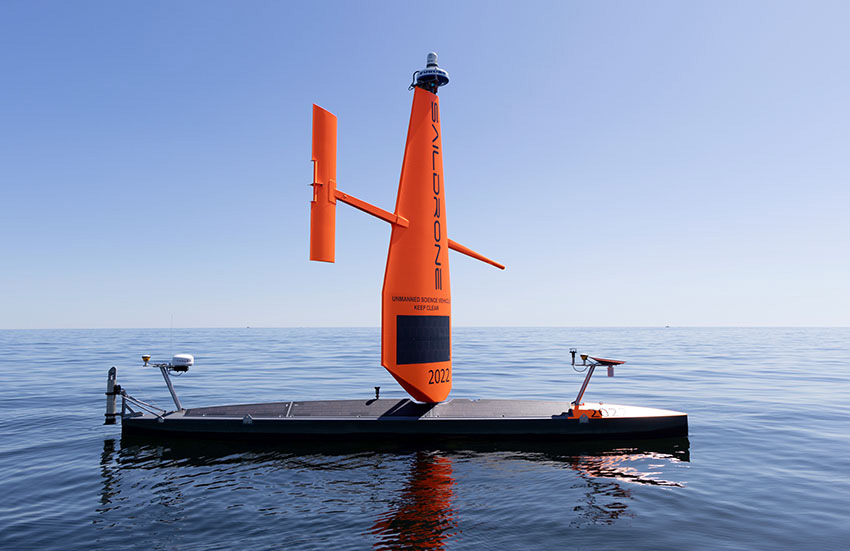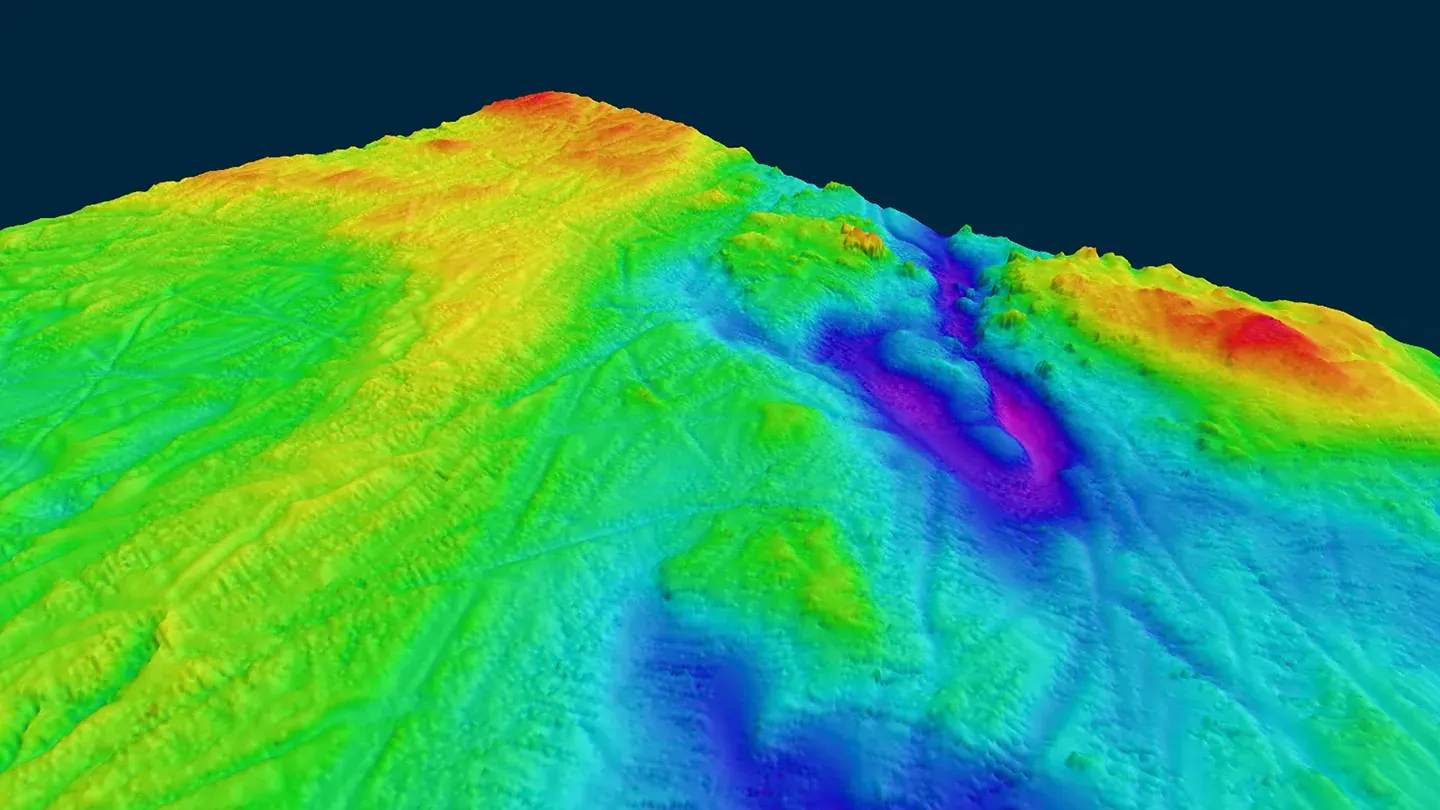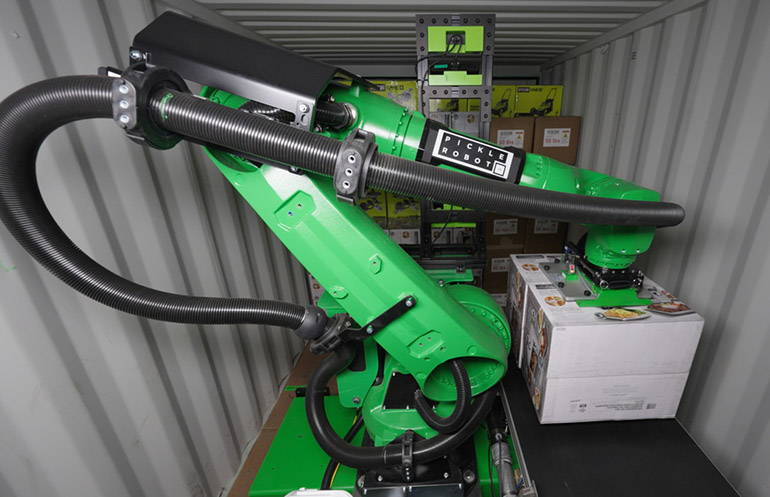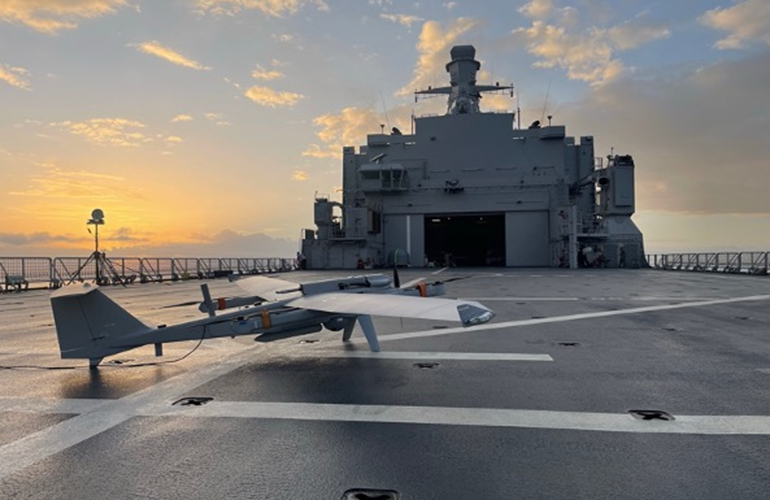The Saildrone Voyager is a 10 m uncrewed surface vehicle (USV) designed for seafloor mapping at depths up to 300 m. | Source: Saildrone
Two Saildrone Voyager uncrewed surface vehicles, or USVs, have surveyed 1,500 square nautical miles (5,144.8 sq. km) in a north-central area of the Gulf of Maine. The marine robots mapped areas that had never been mapped in high resolution.
This expedition supports deep-sea coral surveys and other missions of the National Oceanic and Atmospheric Administration (NOAA).
The Gulf of Maine, which is bordered by Massachusetts, New Hampshire, and Maine, as well as the Canadian provinces of New Brunswick and Nova Scotia, is a productive and dynamic marine environment. Its waters are home to a diverse array of economically important fisheries, including Atlantic cod, herring, lobster, and scallops.
In addition, the gulf houses unique underwater habitats, including kelp forests, eelgrass beds, and deep-sea coral. All of these may provide shelter and breeding grounds for many marine organisms.
Saildrone Inc. said it creates uncrewed surface vehicles (USVs) that can cost-effectively gather data for science, fisheries, weather forecasting, and more. The Alameda, Calif.-based company uses autonomous vessels to deliver observations and insights about activity above and below the ocean surface.
The Surveyor, Explorer, and Voyager USVs are powered by renewable wind and solar energy. They continuously feed data in real time to drive more informed decision-making across maritime security, trade, and sustainability, said Saildrone.
Why is the Gulf of Maine so important?
In addition to its diverse wildlife, the Gulf of Maine’s seafloor has a complex topography of sea basins, shallow banks, and steep slopes. However, high-resolution mapping data has been extremely limited, especially in deeper waters.
The Exclusive Economic Zone (EEZ) generally extends from the coast to 200 nautical miles (370.4 km) offshore. This is the maritime zone for which a coastal country has jurisdiction over natural resources.
Over 4 million sq. mi. (10.3 million sq. km), the U.S. EEZ is larger than all 50 states combined, yet 48% remains unmapped and unexplored, according to Saildrone. Accurate ocean depths and topography are essential for resource management and responsibly developing and maintaining coastal infrastructure.
To improve understanding of the seafloor, the federal government established the “Strategy for Mapping, Exploring, and Characterizing the United States Exclusive Economic Zone” (NOMEX). The Gulf of Maine is one of the highest mapping priorities due to its significant commercial fisheries supported by diverse habitats and the potential to support wind energy.
In particular, good mapping data is necessary to guide the search for deep-sea coral, which serves as a habitat for important fisheries, Saildrone noted.
Saildrone Voyager maps Gulf of Main basins
Saildrone’s mission primarily focused on the Jordan and Georges Basins, at depths of up to 300 m (984.2 ft.). The company’s data revealed a complex and varied underwater landscape, reflecting its glacial history and dynamic oceanographic processes.
“The Saildrone Voyagers are filling in a substantial gap in seafloor data in the Gulf of Maine,” said Heather Coleman, a researcher in the Deep Sea Coral Research and Technology Program under the NOAA Fisheries Office of Habitat Conservation.
“NOAA and partners are very interested in better understanding habitats in the region that may support fish production,” she added. “These high-resolution seafloor maps will inform future surveying and modeling efforts, as well as aid in the New England Fishery Management Council’s (NEFMC) fishery management decisions.”
Voyager is a 10-m (33-ft.) USV designed specifically for near-shore ocean and lakebed mapping. It carries a payload of science sensors and mapping echo sounders, as well as navigation and communications equipment.
Saildrone said Voyager can deliver long-duration International Hydrographic Organization (IHO)-compliant multibeam mapping surveys and ocean data collection. While the company’s USVs are primarily wind and solar-powered, Voyager also carries a high-efficiency electric motor for speed and maneuverability in light winds.
Undersea data has multiple uses
The multibeam and backscatter data collected in the Gulf of Maine will inform new species-distribution models, which was previously not possible with the lack of high-resolution seafloor information. These new maps will also help update nautical charts and aid navigation, filling important gaps in bathymetric coverage.
“This is the first successful demonstration of Saildrone Voyager mapping capabilities, pushing the envelope of what is possible using autonomous systems for shallow to mid-depth EEZ mapping,” said Brian Connon, vice president of ocean mapping at Saildrone. “Its state-of-the-art Norbit multibeam echo sounder, combined with near-silent operations and classification from the American Bureau of Shipping, make Saildrone’s Voyager the USV of choice for near-shore mapping.”
“These capabilities can be applied for any number of missions, from habitat exploration to safety of navigation to site characterization for offshore wind,” he asserted.
Saildrone has been operating autonomous data collection missions for ocean research, seafloor mapping, and maritime security since 2015. To date, it has built more than 140 USVs across the three Explorer, Voyager, and Surveyor classes.
The Saildrone fleet has already spent more than 42,000 days at sea and sailed more than 1.3 million nm (240,000 km) from the High North to the Southern Ocean. Earlier this month, Saildrone began a mission to map 29,300 sq. nm (10,000 sq. km) of the Cayman Islands’ EEZ.

 3 months ago
42
3 months ago
42











 English (US) ·
English (US) ·